Even if your cat is as friendly and happy as can be, there’s no avoiding the occasional bad mood. And instead of lashing out with their words or fists like what humans do when we’re upset, our felines friends have an arsenal of claws and teeth. They can inflict serious injury on anyone who gets in their way when they’re stressed, afraid, or confused.
No cat parent wants to see their precious kitty upset, and if you’re involved in TNR or rescue, you’ve probably seen more than your fair share of raised hackles. And while these distressed cats probably want nothing to do with your human attention, you might need to intervene for their own safety and well-being. If you need to restrain an upset cat, consider these tips.
Think About Context
Before you dive in to restrain an upset cat, first think about why the cat is upset. There is a long list of situations that could cause a cat distress. Some cats react aggressively during vet visits, nail trimmings, or bath time. Cats also get upset when they’re fighting with other animals or are annoyed with human behavior. How you go about calming your cat will depend on the situation.
Cat Fight: Cat fights are fairly common. It starts with a puffed up tail and a hiss, and it escalates into yowling, scratching, and biting. While watching your cat duke it out with another feline is scary (you don’t want either cat to get hurt!), getting in the middle of that fight is a bad idea. Instead, there are other ways to break up the fight that won’t put you in the line of fire.
To break up a cat fight, first try distract the cats with food, loud noises, or water. You can read more about breaking up cat fights here. Once you separate the combatants, you can move forward with safely restraining your cat.
Unwanted Handling: A lot of cats value their personal space, and they don’t appreciate pesky humans examining their their ears, looking at their teeth, or trimming their nails. Performing these necessary tasks is a lot harder when you have an uncooperative cat that is getting more upset by the second. In these cases, your first step to restraining your cat is calming down the situation. Take a break if you need to and offer kitty tasty treats and cuddles. Your cat might still be upset, but restraining her will be a lot easier if you both take time to settle your nerves.
Tips to Restrain an Upset Cat
Considering the context of the situation, there are several steps you can take to safely restrain your cat when the claws are out and they’re feeling cranky. The goal is to get through the situation without stressing out your cat even more, without hurting her, and without getting hurt yourself. Here’s what you need to do.
Distractions
If your cat is thoroughly freaking out, distractions might be your safest first step in calming their nerves. Offer up the tastiest food you can find or bring out their all-time favorite toy. It might take a few minutes for them to come down from their agitated state and notice what you’re doing. Once they’re interested in your offerings, you can move forward with restraining them.
Try the Burrito Method
The burrito method is a simple restraint strategy that protects you from claws and helps cats feel safe and secure. It’s a lot like swaddling a baby. Feeling the warmth and pressure of being wrapped in a blanket or towel helps calm cats when their stress levels start rising.
On a Cooperative Cat: If you’re being preemptive because you know you need to trim your cat’s nails and she’s not going to like it, you can try the burrito method before you even bring out the clippers. First, lay out a towel or small blanket on a flat surface. Coax your cat into standing on the towel. Gently lift the edges of the towel up and over your cat’s body. Wrap the edges so your cat looks like a cozy burrito.
On an Uncooperative Cat: For cats that are already past the point of cooperating, you can try the burrito method a different way. Instead of trying and failing to coax the cat onto the blanket, behaviorists suggest dropping the blanket over top the cat and working from that direction. Try not to startle your cat, because that will only make the situation worse. Make your movements quick and decisive. If all goes well, the blanket will help the cat calm down, and you can finish swaddling with minimal resistance.
Don’t Be Too Forceful
While restraining an upset cat is in their best interest, you never want to force a cat into doing something they really don’t want to do. If you’re attempting the burrito method, and your cat starts violently flailing, it’s time to stop. Remember, you want to calm your cat, not make them more upset. If your attempts are making things worse, it’s best to give kitty some space and try again once they’ve had time to calm down.
Avoid Scruffing
Scruffing is a highly-debated restraint technique in the world of cat behavior. On the one hand, we see the positive effects of scruffing every time a mother cat picks up her kitten. It seems to automatically calm the kitten down. And when we humans try it out, we sometimes have success in convincing the cat to submit. Pet MD reports scruffing is more effective on young cats than adult cats, and response varies for every individual animal. Most behaviorists agree, however, that being “scruffed” by a human is actually a frightening and uncomfortable experience for cats. It can work temporarily, but it can make things worse in the long run. The cat will associate the negative emotions that come with scruffing to the situation, and next time, they’ll try harder to keep you away.
Ask a Friend
If your cat is a wiggly one, an extra pair of hands will come in handy. Pick a person who your cat is already familiar with. You don’t want to make the situation worse by bringing in a stranger. But if one of you can distract kitty with some treats while the other one works on getting a towel around those claws, you all might make it through the situation unscathed.
Know When You Need a Professional
Vets, vet techs, and cat groomers all have experience in restraining upset cats. If you know that your cat has an extreme hatred of nail clippers or water, don’t attempt to do those chores on your own. You don’t want your cat to associate you with those scary situations, and you also don’t want to make a mistake that will make matters worse. When you know your long-haired cat needs a bath or your kitty’s nails are way too long, find a professional and trustworthy service provider. Explain the situation to them and ask what their ideas are. If it sounds like they have experience with feisty felines and know what they’re doing, let them take the lead.
As much as you pamper you cat and do everything you can to make them happy, you can’t completely avoid the occasional bad mood. All cats get upset. It doesn’t mean your cat hates you, and it definitely doesn’t mean you’re a bad cat parent. All that matters is how you handle the situation.
REMEMBER: ADOPT, DON’T SHOP; FOSTERING SAVES LIVES & SPAY AND NEUTER!
Related Story: How The Full Moon Can Affect Your Pet
Related Marmalade Video: Kitten’s First Vet Visit





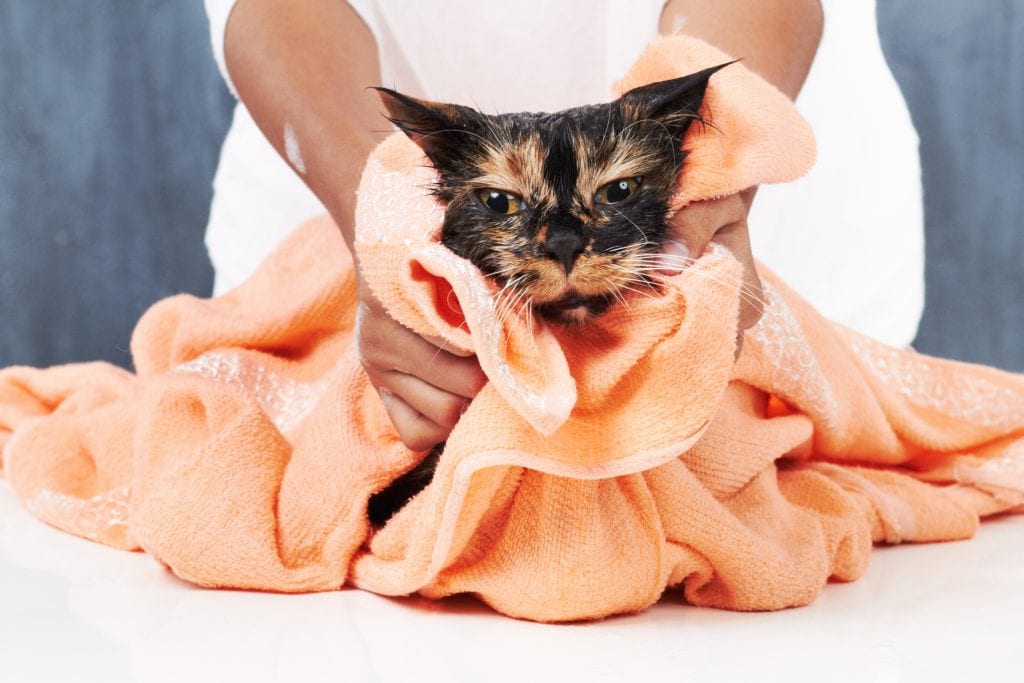
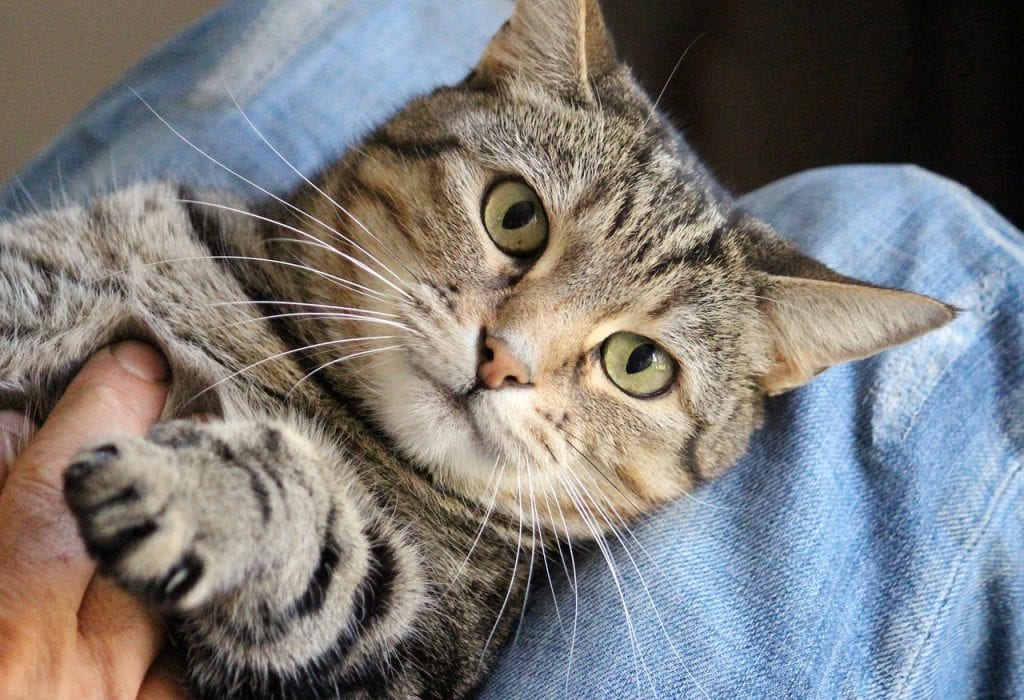

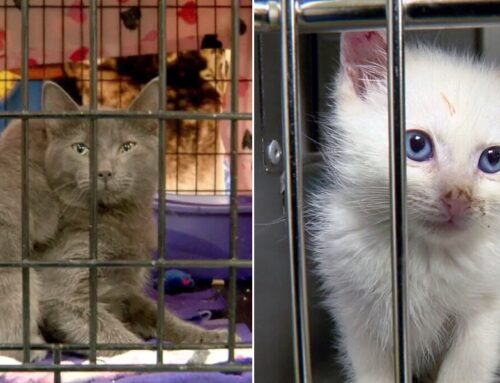
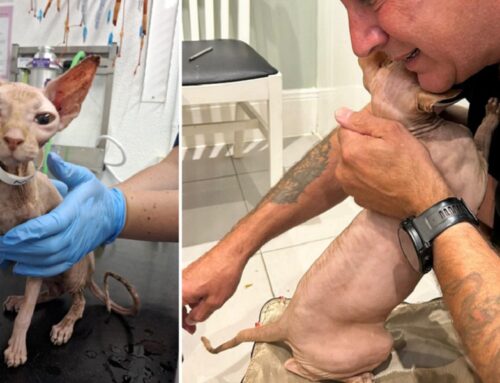
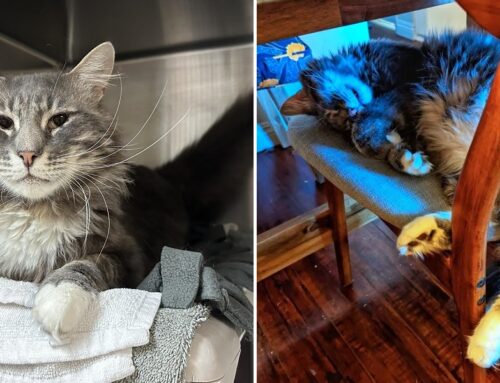







by the Grace of God, on the rare occasions when my cats have been outside and met another cat who wanted to fight, mine have always allowed me to walk up to them, pick them up, and carry them away, even when in the middle of swearing up a storm at the stranger. Not sure i’d recommend trying that, though…..think i’ve been very lucky!! (some cats think they’re being attacked from behind and will really go for you!) cheers!
My Cleopatra is a rescue. She was never properly socialized. I’m extremely proud of how far I’ve been able to socialize her in the 5 years I’ve had her, but she will *not* allow me to pick her up. Then, last week, she got sick. I desperately needed to get her to her vet *quickly* as she wasn’t urinating enough. I have just had surgery for melanoma. We are *both* stressed to the max. I managed to capture her in a plastic litter bucket to get her to the vet. (After that, she was frightened enough that she was passage and easy to handle. She fought *me* with tooth and nail *because* she trusts me.) This kind of situation is one in which the *only* reasonable solution is medication: gabapentin. People need to know that this drug exists, that it is safe, that it makes your kitty feel *wonderful* (I know personally, because *I* took gabapentin for 5 years), and if you have similar problems to mine, for example being owned by a rescue or a highly reactive kitty, you *need* to get your kitty to the vet and get a prescription for gabapentin BEFORE you have an emergency. I wish someone had given *me* this advice years ago.
“passage” should read “passive”. Sorry.